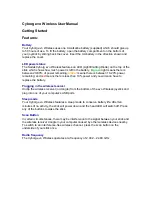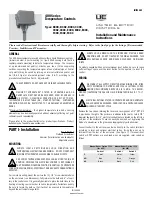
4-8
|
ni.com
Chapter 4
Signal Connections
Figure 4-4.
Quadrature Encoder Phasing Diagram
You can set the index reference criteria in MAX to change the pattern of phases A and B for the
Index search. You can also set the encoder polarity for phases A, B, and Z in MAX.
Wiring Concerns
The encoder inputs are connected to quadrature decoder/counter circuits. It is very important to
minimize noise at this interface. Excessive noise on these encoder input signals may result in
loss of counts or extra counts and erroneous closed-loop motion operation. Verify the encoder
connections before powering up the system.
Caution
Wire encoder signals and their ground connections separately from all
other connections. Wiring these signals near the motor drive/amplifier or other
signals can cause positioning errors and faulty operation.
Encoders with differential line driver outputs are strongly recommended for all applications and
must be used if the encoder cable length is longer than 3.05 m (10 ft). Shielded, 24 AWG wire
is the minimum recommended size for the encoder cable. Cables with twisted pairs and an
overall shield are recommended for optimized noise immunity.
All National Instruments power drives and UMI accessories provide built-in circuitry that
converts differential encoder signals to single-ended encoder signals.
Caution
Unshielded cable can cause noise to corrupt the encoder signals, resulting
in lost counts and reduced motion system accuracy.
Encoder Input Circuit
Figure 4-5 shows a simplified schematic diagram of the circuit used for the Phase A, Phase B,
and Index encoder inputs. Both phases A and B are required for proper encoder counter
operation, and the signals must support the 90° phase difference within system tolerance. The
encoder and Index signals are conditioned by a software-programmable digital filter inside
the FPGA. The Index signal is optional but highly recommended and required for initialization
functionality with the Find Index function.
Ph
as
e A
Ph
as
e B
Index
















































